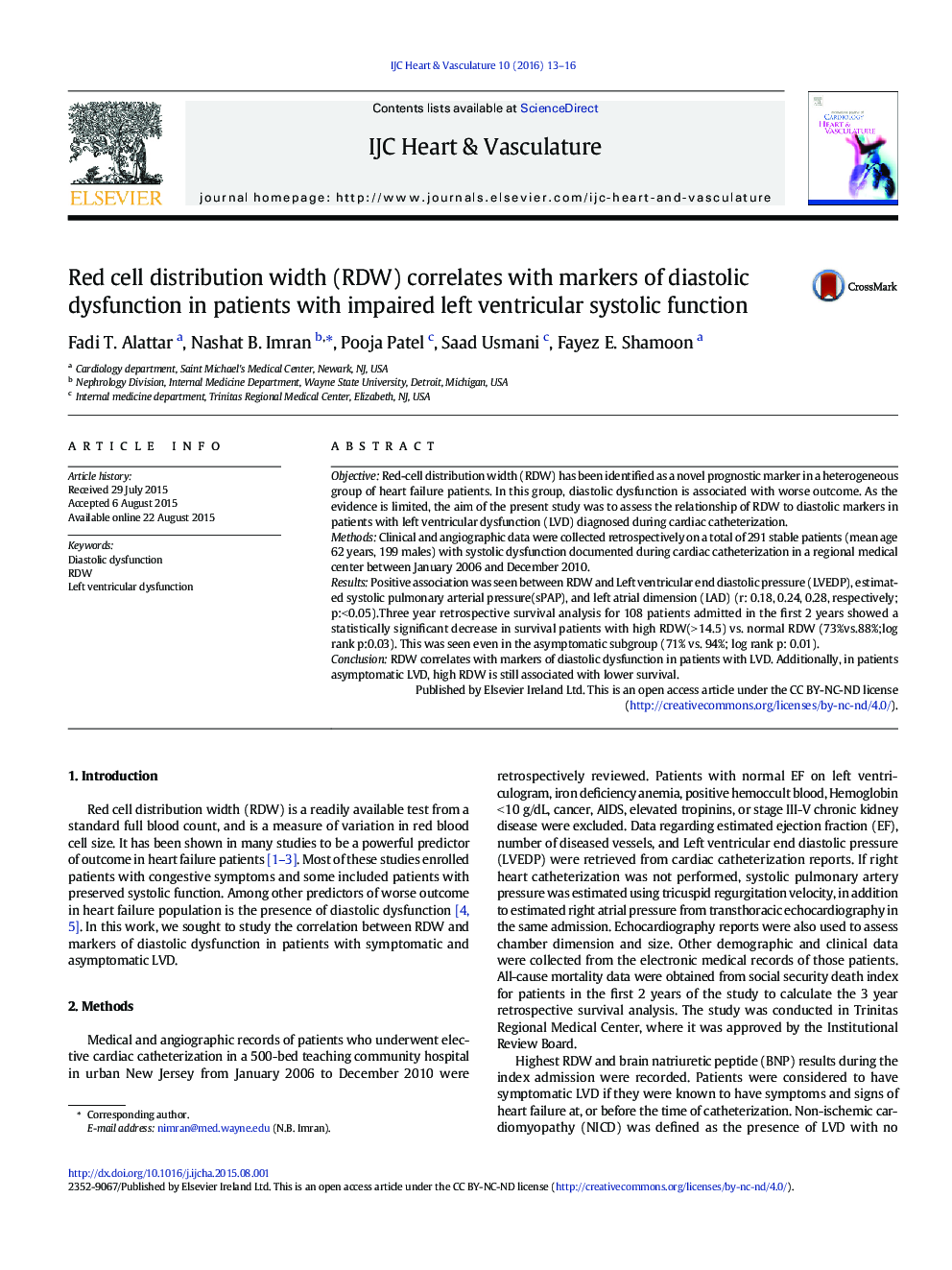| Article ID | Journal | Published Year | Pages | File Type |
|---|---|---|---|---|
| 2926945 | IJC Heart & Vasculature | 2016 | 4 Pages |
ObjectiveRed-cell distribution width (RDW) has been identified as a novel prognostic marker in a heterogeneous group of heart failure patients. In this group, diastolic dysfunction is associated with worse outcome. As the evidence is limited, the aim of the present study was to assess the relationship of RDW to diastolic markers in patients with left ventricular dysfunction (LVD) diagnosed during cardiac catheterization.MethodsClinical and angiographic data were collected retrospectively on a total of 291 stable patients (mean age 62 years, 199 males) with systolic dysfunction documented during cardiac catheterization in a regional medical center between January 2006 and December 2010.ResultsPositive association was seen between RDW and Left ventricular end diastolic pressure (LVEDP), estimated systolic pulmonary arterial pressure(sPAP), and left atrial dimension (LAD) (r: 0.18, 0.24, 0.28, respectively; p:<0.05).Three year retrospective survival analysis for 108 patients admitted in the first 2 years showed a statistically significant decrease in survival patients with high RDW(> 14.5) vs. normal RDW (73%vs.88%;log rank p:0.03). This was seen even in the asymptomatic subgroup (71% vs. 94%; log rank p: 0.01).ConclusionRDW correlates with markers of diastolic dysfunction in patients with LVD. Additionally, in patients asymptomatic LVD, high RDW is still associated with lower survival.
